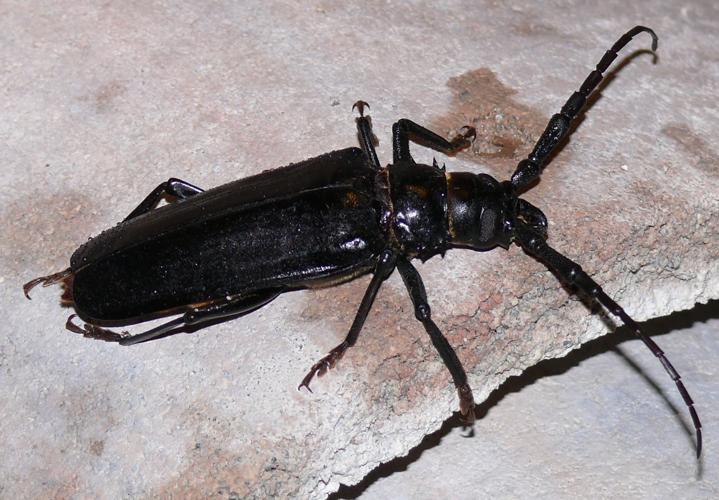Question: We purchased our home in Tucson Estates a few years ago. As part of the landscaping, there are bougainvillea plants along a fencerow. Every summer we have battled some kind of an insect that eats the green leaves. When we begin to have the cooler temps, the insects seem to be fewer and the plants finally begin to blossom a lovely red. With our recent warm temperatures, the insects are back in abundance. I’d really like to get on top of this before next spring so that we can have healthy plants and blossoms. Is there any hope? If so, what can we do?
Answer: There are two known caterpillar pests of bougainvillea. Disclisioprocta stellate, aka the bougainvillea looper and the somber carpet moth, is a moth originally from Africa that is now found commonly in Hawaii and the southern United States. The adult is a small brown moth and the caterpillar is also brown and small. Loopers crawl by arching their body into a loop shape so they are easy to identify while moving. Asciodes gordialis, aka the bougainvillea caterpillar moth, is also a small brown or tan moth found in the southern states. The caterpillar is green and doesn’t loop while crawling. Both of these insects will disappear in the cool part of the year and resume activity in the warm times. Identifying them would be useful and probably fun for me so I would like to know when they begin feeding again in the spring if you don’t mind. To manage them, you will use the same strategy. You can look for caterpillars now and whenever you start to see new damage and pick them off the leaves. They are helpless off the plants. You can also spray the leaves with Bacillus thuringiensis (Bt) labeled for caterpillar pests to kill the ones you overlooked. Looking more often when you notice new damage will help. There will be periods of time when they are less active when a quick weekly examination will suffice. The insect in the photo you sent is a green lacewing and is a beneficial insect that might help with your pest management. For this reason, the Bt is a good choice because it will harm only caterpillars.
Question: Please — when you tell someone to water a tree down about 4 feet — will you please use other parameters? How am I supposed to know when something is wet down to 4 feet? Dig a hole? I didn’t read it today, and I can’t say that you are responsible for this — but many times past over the years I have had the same reaction. It’s just that today I am finally taking the time to write and your email address is handy!
Answer: Watering depth can be measured in several ways including some fairly sophisticated devices, calculating the output from your drip irrigation emitters, and by using a soil probe. The soil probe is the least complex and the least expensive. This device can be as simple as a piece of rebar with a handle and a pointed end. These probes are sold in a variety of garden shops and even our Cooperative Extension office sells them to benefit the Master Gardener Program. Some are as cheap as $5 and others are a bit more expensive. By pushing the probe into the soil after irrigating you can tell approximately how deep your water is going. The dry soil will provide more resistance than wet soil so you can stop pushing when it becomes more difficult and measure how much of your probe is in the soil. It’s not as much fun as math but it can help you adjust your irrigation practices.
Question: My yard has a palo verde borer beetle infestation. I have personally smashed/stepped on/killed this many the last three years: 2014 – 54, 2015 — 53 (June 18-July 21), 2016 — 66 (June 19-July 31). I documented how many per night. And documented male/female numbers.Front yard has a 12-year-old Desert Museum palo verde with the most infestation. It lost a quarter of its branches this fall. Backyard has a 30-plus-year-old ash tree. In 2016, 28 of the 66 were from the ash. I tried two applications of beneficial nematodes (September 2015 and April 2016) with no reduction. Any help and suggestions are welcomed.
Answer: Palo verde beetles are typically an indicator of a stressed tree. They are often found when dead palo verde trees are removed but they are rarely responsible for the death of trees. Trees often die of multiple causes including the many environmental factors they are exposed to in our landscapes. It is usually these stresses and other factors unrelated to the beetles that cause tree death, even when the beetle larvae are present feeding on the roots. My suggestion is to make sure you are doing everything you can to care for your trees. This will go a long way toward protecting them from an early death. Beneficial nematodes are a wonderful thing in the right circumstances but there is no research I am aware of that shows they have any affect on palo verde beetle populations.






